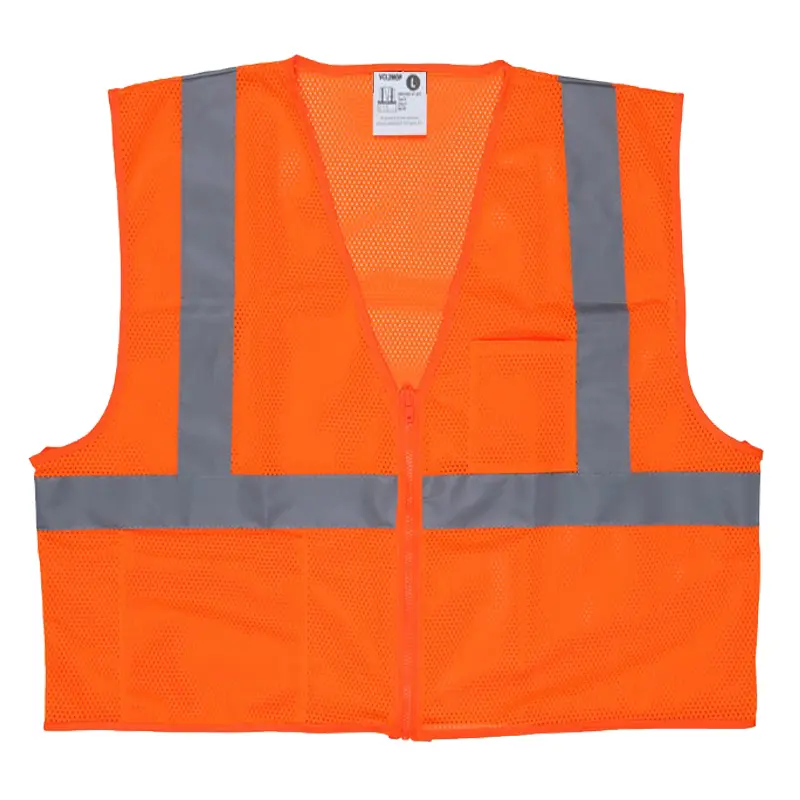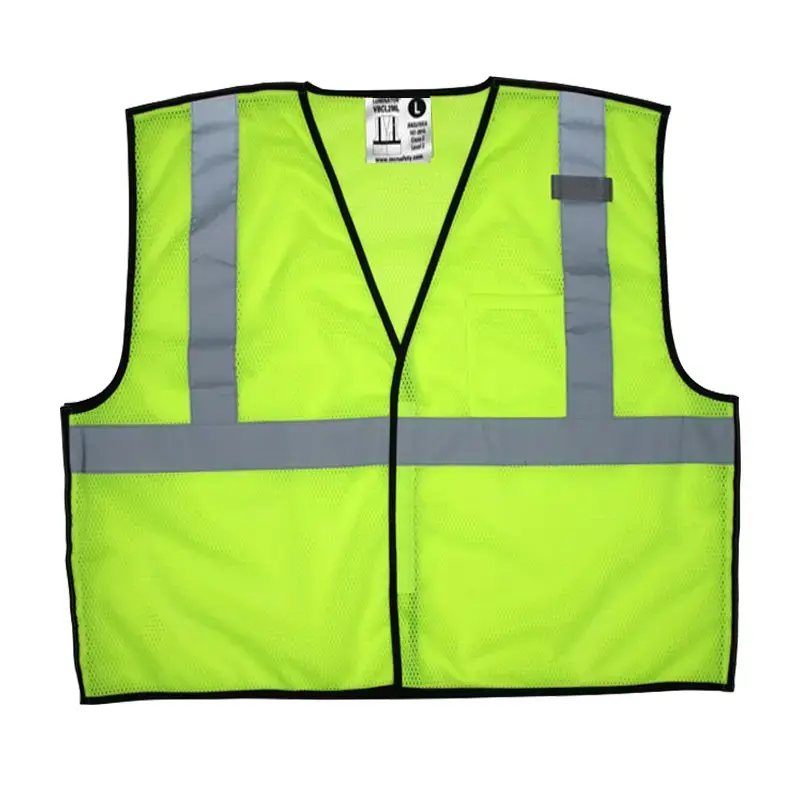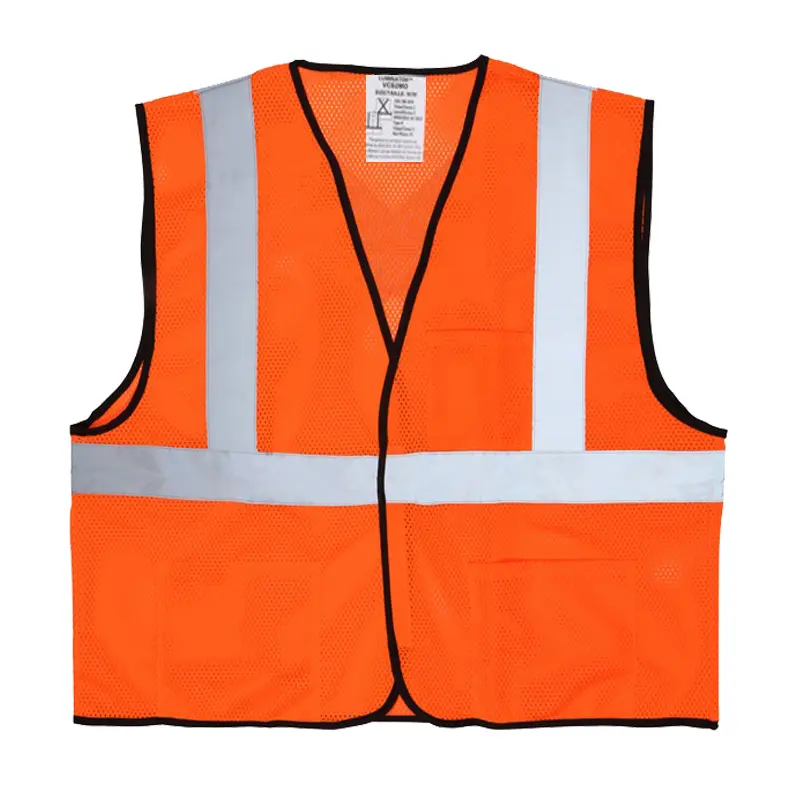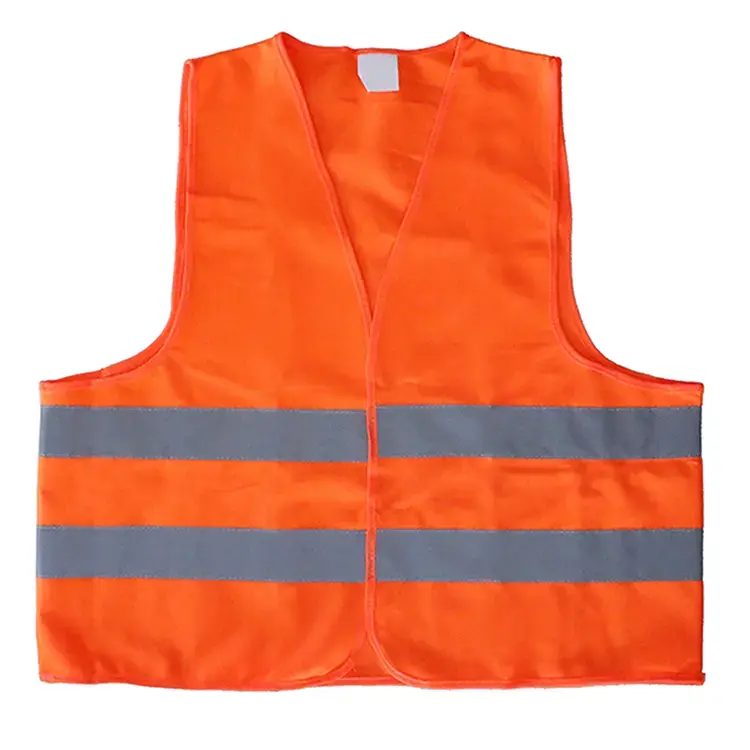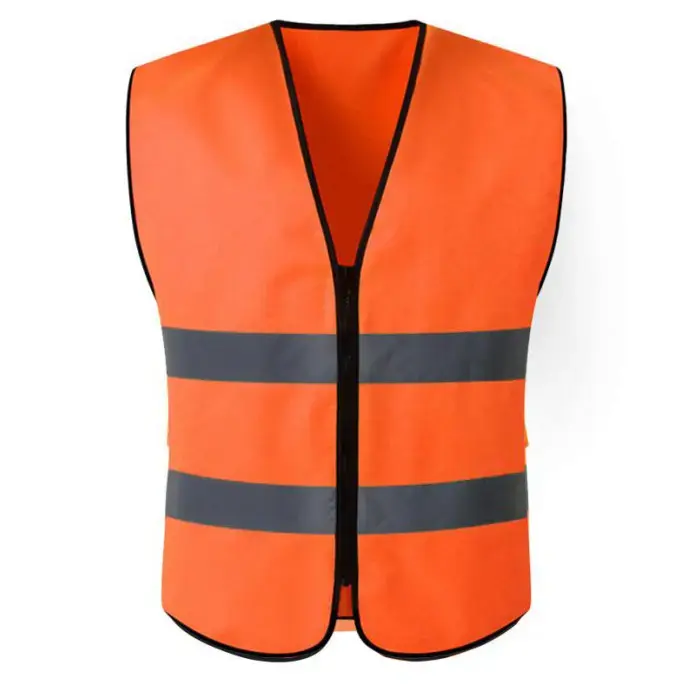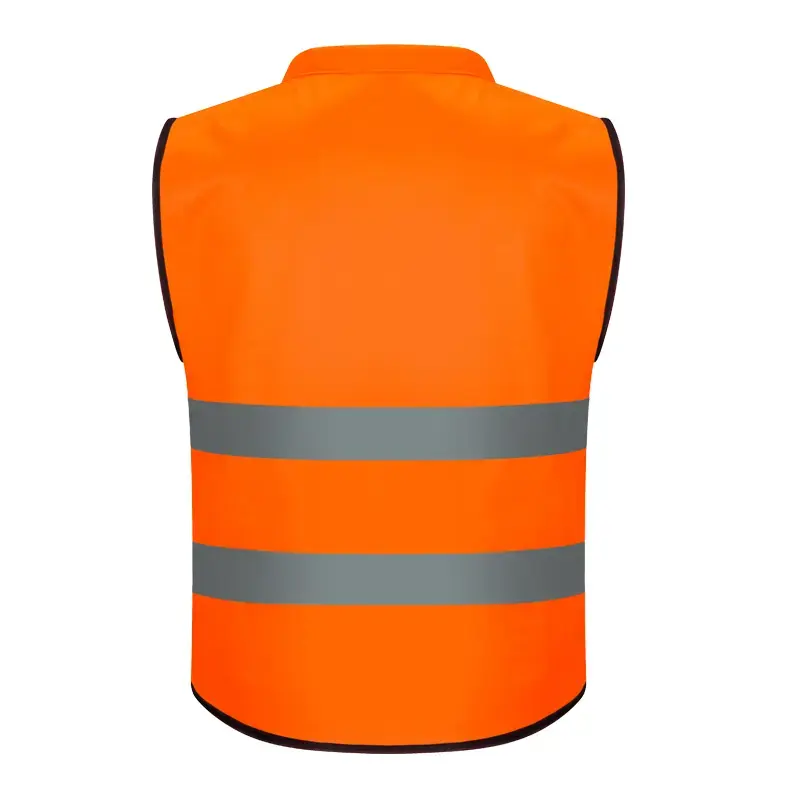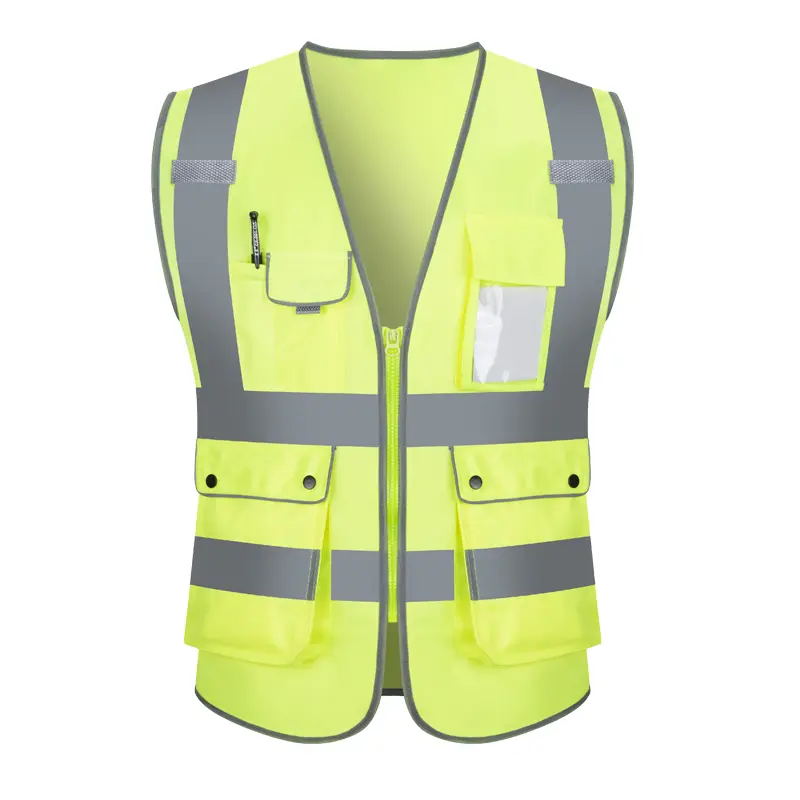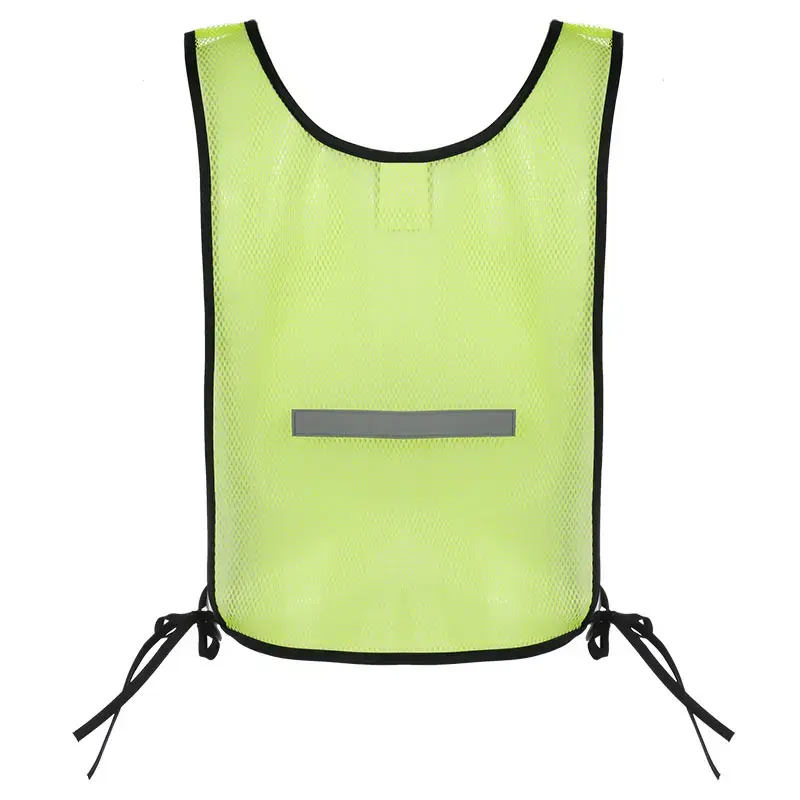A complete analysis of the materials used to make reflective safety jackets
A complete analysis of the materials used to make reflective Safety Jackets
In today's era of safety protection, reflective safety jackets have become one of the essential equipment for workers in many industries. Whether on busy roads, construction sites, or in logistics and warehousing areas, a high-quality reflective safety jacket can provide the wearer with significant visibility at night or in low-light environments, effectively reducing the risk of accidents. A deep understanding of the materials used to make reflective safety jackets will not only help us better choose products that suit our needs, but also give us a more comprehensive understanding of their performance and advantages. This article will explore all aspects of the materials used to make reflective safety jackets and take you to uncover the secrets behind them.
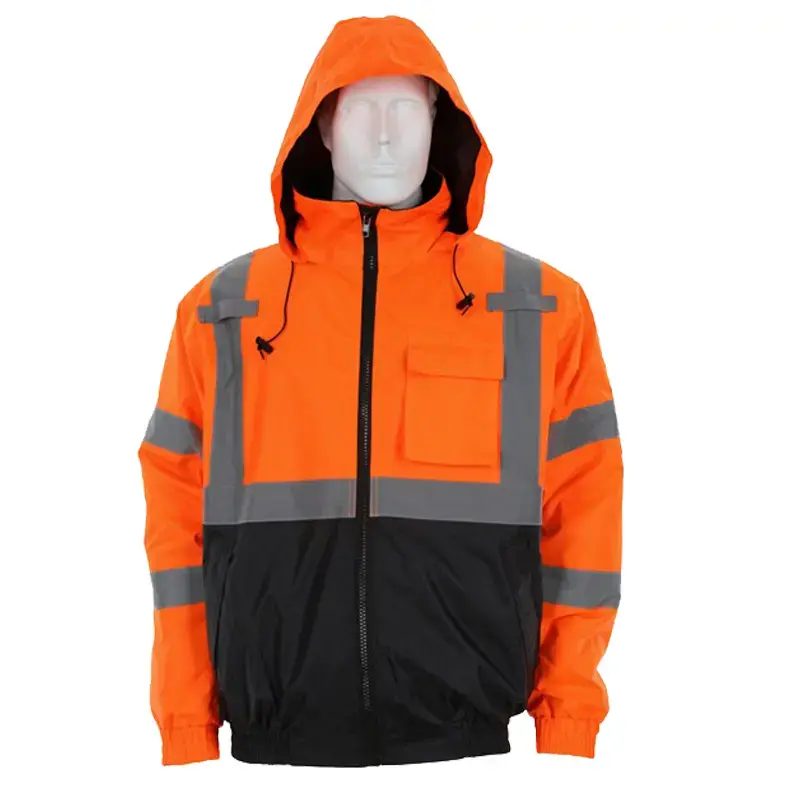
1. Fabric basis of reflective safety jackets
(I) Polyester fabric
Polyester is currently a more commonly used fabric material in the production of reflective safety jackets. It has many excellent properties. First of all, polyester has high strength, and its tensile strength is outstanding in both the longitudinal and transverse directions, which enables the jacket to withstand certain external forces such as friction and pulling, and is not easy to break. In harsh working environments, such as construction sites and factory workshops, it can maintain good durability. Secondly, polyester fabric has good wear resistance, is not easy to be scratched or worn, and can maintain its appearance and protective performance for a long time. In addition, polyester's wrinkle resistance is also a major advantage. After treatment, it is not easy to wrinkle, which is convenient for the wearer to move around, and is easy to take care of. It can maintain a neat appearance with simple ironing or even no ironing.
However, polyester fabric also has its limitations. Its moisture absorption is relatively poor. In a humid environment, the wearer may feel uncomfortable, and sweat is not easily absorbed and dissipated, which can easily cause skin moisture and discomfort. However, through some special post-processing techniques, such as moisture absorption and perspiration finishing, its moisture absorption and perspiration performance can be improved to a certain extent, making it more suitable for long-term wear.
(II) Nylon fabric
Nylon is also one of the important fabric choices for making reflective safety jackets. It is known for its high elasticity, which can provide the wearer with comfortable stretching space, and will not cause tightness or restrict movement due to excessive movement. This elastic property makes the jacket made of nylon fabric more comfortable to wear in scenarios where frequent bending and raising of hands are required, such as sanitation workers sweeping the streets and logistics porters carrying goods.
Nylon also has good chemical resistance and can resist the erosion of some common chemicals, such as some weak acids and weak alkalis encountered in industrial sites, thereby extending the service life of the jacket. Moreover, nylon fabric is relatively light and thin, and it will not bring a heavy burden to the human body when worn, which is especially suitable for use in occasions where it needs to be worn for a long time.
However, nylon also has its own shortcomings. Its wear resistance is slightly inferior to that of polyester. In some environments with extremely high wear resistance requirements, it may wear out faster. Moreover, in outdoor environments, the UV resistance of nylon fabric is average. If it is exposed to the sun for a long time, problems such as fabric aging and discoloration may occur, affecting the appearance and performance of the jacket.
(III) Cotton fabric
Cotton fabric is also used in the production of reflective safety jackets, especially in some scenarios where the comfort requirements are extremely high and the working environment has relatively less demanding requirements on wear resistance and strength. The biggest advantage of cotton fabrics is their excellent skin-friendliness and comfort. Cotton fibers are soft and delicate, and will not irritate the skin. Even if worn for a long time, they will not cause discomfort such as skin allergies. They are very suitable for wearing in hot summer, providing the wearer with a cool and comfortable experience.
At the same time, cotton fabrics have good hygroscopicity, which can effectively absorb sweat discharged from the human body and diffuse it to the surface of the fabric, and evaporate it quickly, thereby keeping the skin dry. This can effectively avoid the discomfort caused by sweat accumulation for workers who have a large amount of outdoor activities, such as gardeners, agricultural workers, etc.
However, the strength and wear resistance of cotton fabrics are relatively low, and they are easily damaged in high-intensity friction and pulling environments. Moreover, pure cotton fabrics are prone to wrinkles and need to be ironed frequently to keep them clean, which increases the cost of use and maintenance to a certain extent. However, by blending cotton with other fibers such as polyester, its strength and wrinkle resistance can be improved to a certain extent.
2. Reflective materials - the soul of the jacket
(I) Glass bead reflective material
Glass bead reflective material is one of the earliest reflective materials used in reflective safety jackets, and it is also a relatively basic type. Its principle is to use the high refractive index characteristics of glass beads to achieve the reflective effect. Glass beads are generally small in size, usually around 0.1-0.5mm in diameter. They are embedded on the surface of the reflective fabric. When light shines on the glass beads, the light will undergo a series of optical effects such as refraction and reflection inside the beads, and finally return the light along the original path, so that people at the light source can clearly see the reflective object.
The advantage of glass bead reflective material is that the cost is relatively low, and it can meet the basic night reflective needs to a certain extent. Moreover, its reflective effect has a certain performance at all angles. As long as the light can shine on the glass beads, it can produce reflection. However, this reflective material also has obvious disadvantages. Its reflective intensity is relatively low, and the reflective effect may not be obvious enough under strong light, and it cannot meet the requirements of some higher safety standards. Moreover, glass beads are easily affected by external environmental factors, such as rain, dust, etc., which can easily lead to a decrease in the reflective performance of glass beads, and regular cleaning and maintenance are required.
(II) Prism-type reflective material
Prism-type reflective material is currently a more advanced and widely used reflective material. It is mainly composed of tiny prism units, which are usually made of transparent materials with high refractive index, such as polycarbonate and acrylic resin. The reflective principle of prism-type reflective material is based on the principle of total reflection. When light enters the prism unit at a certain angle, it is totally reflected at a specific angle inside the prism, and the light is reflected back in a specific direction, making the reflective effect more concentrated and strong.
The reflective intensity of this reflective material is much higher than that of glass bead reflective material, which can provide a very eye-catching reflective effect at night or in low light conditions, and can be clearly seen even at a long distance, greatly improving the safety of the wearer. Moreover, the reflective angle of prism-type reflective material is relatively wider, and it can maintain good reflective performance at different observation angles. At the same time, it has good weather resistance and can resist certain erosion from environmental factors such as ultraviolet rays, rain, dust, etc., and has a relatively long service life.
However, the cost of prism-type reflective materials is relatively high, which may lead to an increase in the overall price of reflective safety jackets. Moreover, this material has high requirements for production technology. If defects occur during the production process, it may affect its reflective effect.
(III) Reflective thermal transfer materials
Reflective thermal transfer materials are a new type of reflective material application method. It transfers reflective patterns or texts to the jacket fabric through a thermal transfer process. This material generally prints the reflective coating on a special transfer paper first, and then transfers the reflective pattern to the designated position of the jacket fabric through a high-temperature and high-pressure thermal transfer device.
The advantage of reflective thermal transfer materials is that various complex reflective patterns and texts can be customized according to customer needs, such as corporate logos, safety warning slogans, etc., which can meet personalized design needs. At the same time, because it is fixed to the jacket fabric by thermal transfer, it is relatively tightly combined with the fabric, and it is not easy to fall off during normal use, and the reflective effect can be maintained for a long time. Moreover, this material works well on thin jacket fabrics, without adding too much weight and thickness, and maintaining the comfort of the jacket.
However, the reflective intensity of reflective thermal transfer materials is slightly weaker than that of prismatic reflective materials, and may not be suitable for some scenes that require extremely high reflective intensity. Moreover, its friction resistance is average. If it is used in the friction-frequent parts of the jacket, the reflective pattern may be worn, affecting the reflective effect.
3. Accessories - Indispensable detail support
(I) Zipper
In reflective safety jackets, the quality and performance of the zipper are crucial. High-quality zippers should have smooth opening and closing performance, without problems such as jamming and cloth clamping, making it convenient for the wearer to quickly put on and take off the jacket. Common zipper materials are metal zippers and plastic zippers. Metal zippers are strong and durable, but relatively heavy, and in cold weather, metal zippers may become cold, affecting the user experience. Plastic zippers are relatively light and relatively low in cost, and can be specially treated to have a certain degree of waterproof performance to prevent rainwater from penetrating into the jacket through the zipper gap.
(II) Buttons and buttonholes
In addition to zippers, some reflective safety jackets also use buttons and buttonholes. Buttons are made of a variety of materials, including plastic buttons, metal buttons, etc. Plastic buttons are rich in color and can be matched according to the overall design of the jacket; metal buttons are more textured and durable. The quality of the buttonholes will also affect the service life of the buttons. High-quality buttonholes should have sufficient strength to withstand the repeated buckling and pulling force of the buttons, and will not easily wear, deform or break.
(III) Ribbons and ropes
Ribbons and ropes are often used in reflective safety jackets to tighten the waist and cuffs to adjust the tightness of the jacket to ensure a comfortable fit. The material of the webbing is generally nylon or polyester, which needs to have good strength and wear resistance and be able to remain intact under repeated pulling and friction. The rope should consider its flexibility and elasticity, which is convenient for adjusting the length and will not lose elasticity due to excessive stretching.
(IV) Lining
The lining is a layer of auxiliary material inside the jacket, which mainly plays a role in warmth and comfort. For some reflective safety jackets used in winter, lining materials with good thermal insulation performance, such as fleece lining, cotton lining, etc., can provide extra warmth for the wearer. At the same time, the lining material must also have good breathability to avoid the feeling of stuffiness inside the jacket, which affects the comfort of wearing.
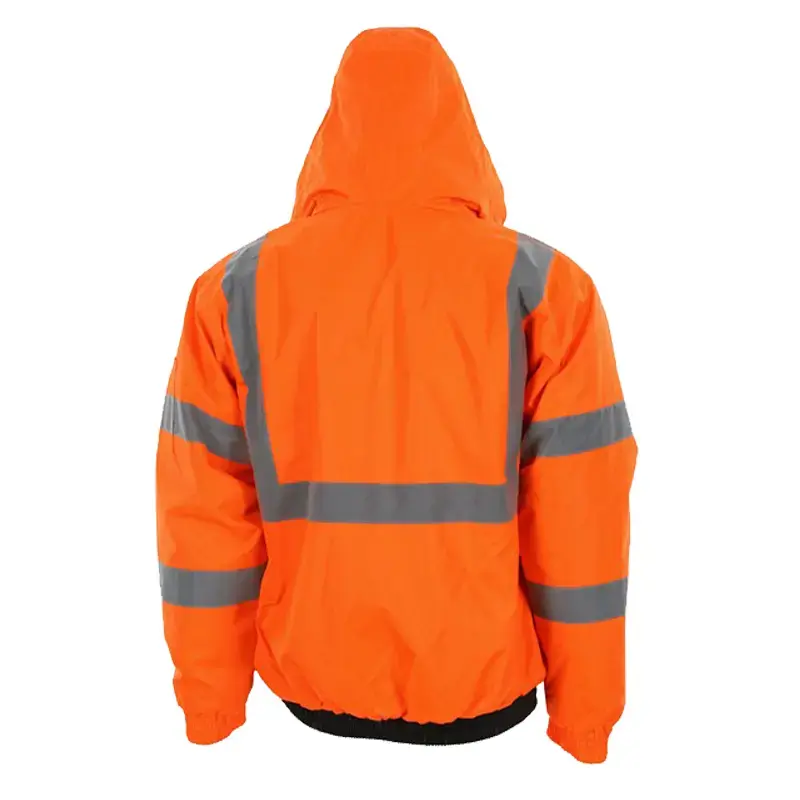
4. Fillers - Provide warmth or special functions
(I) Warmth fillings
In some cold working environments, reflective safety jackets need to have certain warmth functions. Common warm fillings include down, cotton, chemical fiber warm materials, etc. Down-filled jackets have excellent warmth performance. They are highly fluffy and can effectively lock in air to form a good insulation layer, but the price is relatively high, and if they encounter a humid environment, the down is easy to clump and the warmth performance will decrease. Cotton fillings are low in cost and have decent warmth retention, but they have strong hygroscopicity. Once damp, the warmth effect will also be affected, and cotton-filled jackets are relatively bulky. Chemical fiber thermal insulation materials are both warm and economical. They simulate the thermal insulation effect of down through a special fiber structure, have good resilience, and are not easily affected by moisture. They are one of the more commonly used thermal insulation fillers.
(II) Other special fillers
In addition to thermal insulation fillers, some reflective safety jackets will also add other special fillers according to specific needs. For example, in some working environments that require protection from impact, foam materials with certain buffering properties will be added to fill the shoulders, backs and other vulnerable parts of the jacket to reduce the damage to the body caused by external impact. There are also some intelligent fillers, such as heating fibers, which can generate heat through electrochemical reactions and other methods to provide the wearer with a more lasting thermal insulation effect.
5. Comprehensive considerations for manufacturing materials
(I) Safety
As a reflective safety jacket, its primary consideration is naturally safety. The fabrics and reflective materials used to make the jacket need to comply with relevant safety standards, such as international standards
ISO 20471, etc., to ensure that the wearer can be provided with sufficient visibility under various environmental conditions and reduce the risk of accidents. This requires strict control from the procurement of raw materials to ensure that their safety performance meets the standards, and the production process of the jacket must also meet the standard requirements, such as the sewing density and position of the reflective material must be accurate and reasonable.
(II) Comfort
The comfort of the wearer is also very important. After all, only when the wearer is comfortable can the staff be better engaged in work. The skin-friendly, breathable, and hygroscopic properties of the fabric must be carefully considered to avoid discomfort caused by material problems, which will affect work efficiency and work enthusiasm. At the same time, the style design and auxiliary material selection of the jacket will also affect comfort. For example, the appropriate version design can allow the wearer to move freely, and the reasonable combination of auxiliary materials such as zippers and buttons can also avoid unnecessary friction and irritation to the skin.
(III) Durability
Considering that reflective safety jackets are mostly used in relatively harsh working environments, their durability is one of the important indicators for measuring product quality. The strength, wear resistance, and chemical resistance of the fabric must meet the needs of the actual use scenario, and the weather resistance and wear resistance of the reflective material must also be good enough to ensure that the reflective performance and overall appearance of the jacket will not be significantly reduced during long-term use.
(IV) Cost control
On the premise of ensuring product quality, cost control is also a factor that cannot be ignored. The costs of different production materials vary greatly. Enterprises need to reasonably choose production materials based on their own product positioning and target customer groups, and try to reduce production costs and improve the market competitiveness of products on the basis of meeting the requirements of safety, comfort, durability, etc.
(V) Environmental protection
With the continuous improvement of environmental awareness, the materials used to make reflective safety jackets should also meet environmental protection standards as much as possible. For example, recyclable fabrics, pollution-free dyes and finishing agents are used to reduce the impact on the environment. This not only helps to establish a good image of the company, but also meets the needs of some customers with high environmental protection requirements.
6. How to choose suitable reflective safety jacket materials
When choosing reflective safety jacket production materials, the first thing to do is to clarify the use scenario and working environment. If it is used for highway construction, traffic police and other scenes with large traffic flow and frequent night operations, it is necessary to give priority to reflective materials with high reflective intensity, such as prism-type reflective materials, and the fabrics must have good wear resistance and strength to cope with complex road conditions and frequent activities. At the same time, according to local climatic conditions, choose suitable warm or breathable fabrics.
If it is in some corporate workwear scenarios with high requirements for beauty and personalization, in addition to meeting the basic reflective safety performance, you can choose colorful and novel fabrics, with customized reflective heat transfer patterns, to show the corporate image. At the same time, considering the daily wearing comfort of employees, the skin-friendly and breathable properties of the fabric are also key considerations.
For customers with limited budgets, on the premise of ensuring that the safety performance meets the minimum standards, you can choose a combination of relatively low-cost glass microbead reflective materials and polyester fabrics, but pay attention to regularly check and maintain the performance of the reflective materials during use, and replace the worn or damaged jackets in time.
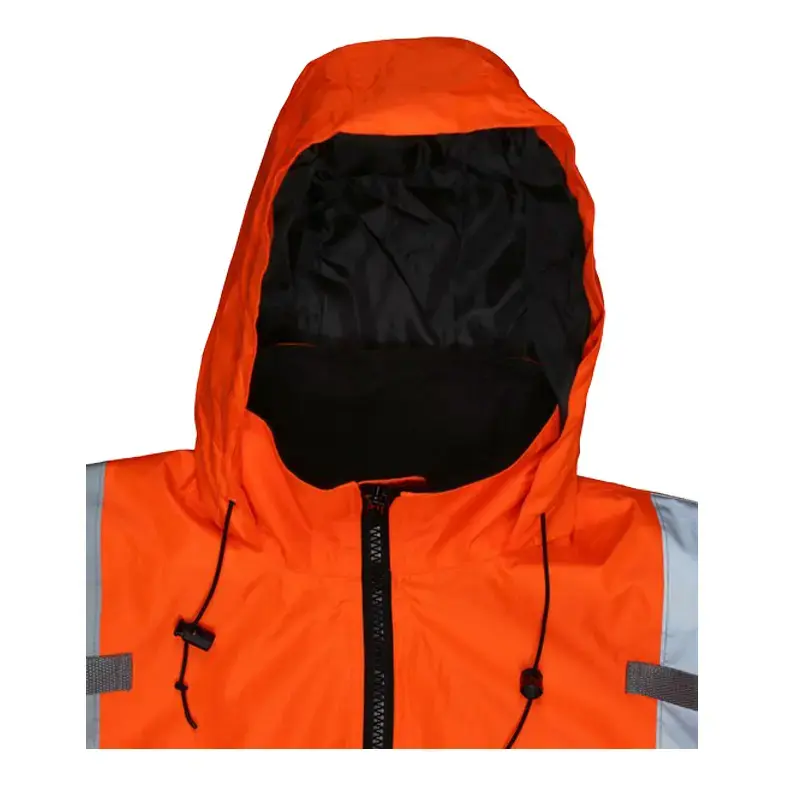
In short, reflective safety jackets are made of a variety of materials, each of which has its own unique performance and applicable scenarios. Only by fully understanding the characteristics of these materials and comprehensively considering safety, comfort, durability, cost and environmental protection and other factors can we choose the most suitable production materials, produce high-quality reflective safety jacket products that meet market demand, and provide reliable nighttime safety protection for workers in all walks of life.

